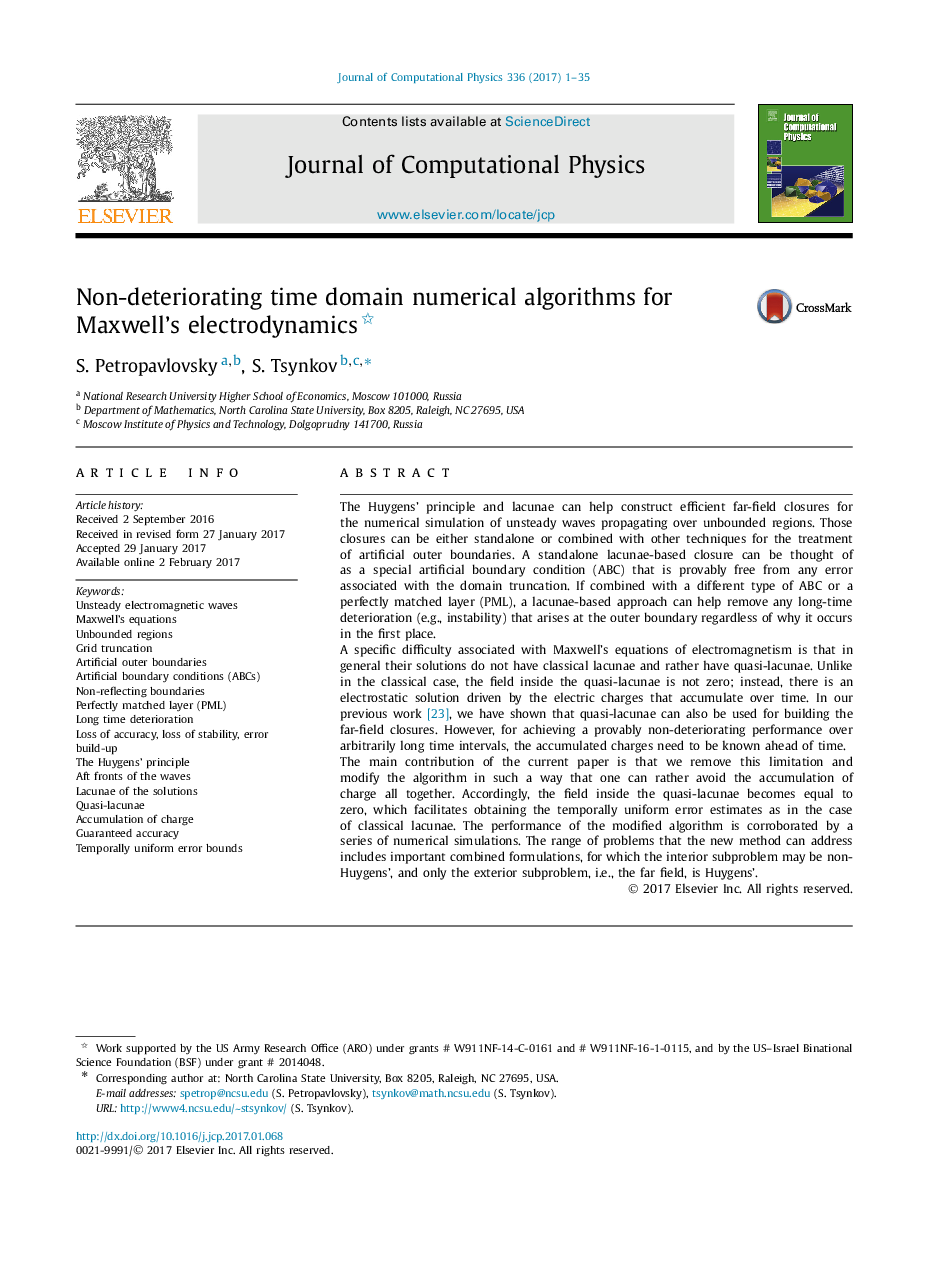| Article ID | Journal | Published Year | Pages | File Type |
|---|---|---|---|---|
| 4967805 | Journal of Computational Physics | 2017 | 35 Pages |
Abstract
The main contribution of the current paper is that we remove this limitation and modify the algorithm in such a way that one can rather avoid the accumulation of charge all together. Accordingly, the field inside the quasi-lacunae becomes equal to zero, which facilitates obtaining the temporally uniform error estimates as in the case of classical lacunae. The performance of the modified algorithm is corroborated by a series of numerical simulations. The range of problems that the new method can address includes important combined formulations, for which the interior subproblem may be non-Huygens', and only the exterior subproblem, i.e., the far field, is Huygens'.
Related Topics
Physical Sciences and Engineering
Computer Science
Computer Science Applications
Authors
S. Petropavlovsky, S. Tsynkov,
